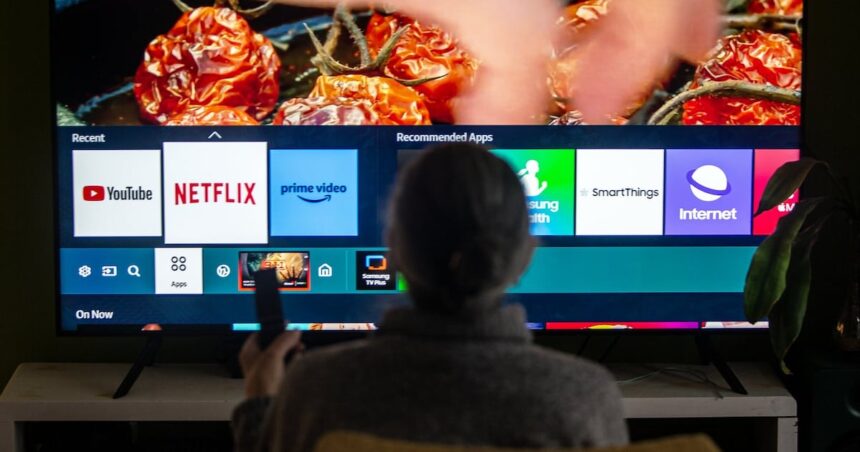The courtroom drama between global streaming giants and Canada’s broadcast regulator intensified yesterday as Netflix, Disney+, and Amazon Prime Video filed a joint legal challenge against new Canadian content funding requirements. The showdown marks the latest chapter in an increasingly tense relationship between international platforms and Canadian regulatory authorities.
“This isn’t about avoiding support for Canadian stories,” said Helen Michaels, Netflix Canada’s director of public policy, speaking outside the Federal Court in Ottawa. “It’s about establishing fair and workable regulations that recognize the reality of global digital services.”
At issue is the CRTC’s April directive requiring foreign streaming platforms operating in Canada to contribute 5% of their Canadian revenue to support domestic film and television production. The regulation, part of the Online Streaming Act (formerly Bill C-11), aims to level the playing field between traditional broadcasters, who have long funded Canadian content, and digital newcomers.
For many Canadians, the dispute represents more than regulatory minutiae. The outcome could reshape what appears on their screens and potentially affect subscription costs.
Standing outside his small production company in Toronto’s east end, independent filmmaker Marc Leblanc expressed mixed feelings about the challenge. “We desperately need sustainable funding for Canadian stories, but I worry these rules were designed for yesterday’s broadcast world, not today’s digital reality.”
The streaming companies argue the CRTC has overstepped its authority. Their legal filing claims the regulator failed to conduct proper economic impact assessments and ignored fundamental differences between traditional broadcasters and global streaming services.
Heritage Minister Pascale St-Onge defended the regulations at a press conference in Montreal. “Canadian broadcasters have contributed to our cultural ecosystem for decades. Digital giants benefiting from access to Canadian audiences should participate in supporting Canadian creators too.”
The dispute touches deeper questions about cultural sovereignty in the digital age. Canada’s broadcasting system has historically balanced commercial interests with cultural objectives, including requirements that radio stations play Canadian music and TV networks air Canadian shows during prime viewing hours.
The Canadian Media Producers Association released data showing domestic production dropped 13% last year, highlighting what they call an urgent need for new funding sources. “This isn’t about protectionism,” said CMPA president Reynolds Mastin. “It’s about ensuring Canadian creators have resources to tell Canadian stories in an increasingly global marketplace.”
But the streaming companies insist they’re already investing significantly in Canadian content. Netflix points to productions like “Anne with an E” and the recently announced $500 million commitment to Canadian production facilities in Vancouver and Toronto.
“We’ve created thousands of jobs and opportunities for Canadian talent without regulatory requirements,” said Amazon Prime Video spokesperson Jamie Chen. “Forcing a one-size-fits-all approach risks undermining what’s working well.”
The legal challenge has reignited debate about Canadian content rules themselves. A recent Angus Reid poll found 63% of Canadians agree that preserving Canadian culture through media regulation remains important, though support drops to 41% among respondents under 35.
University of Ottawa law professor Michael Geist, who specializes in internet and e-commerce law, sees deeper issues at play. “The streaming giants aren’t fighting Canadian content—they’re fighting an outdated regulatory framework being forced onto internet services. The distinction matters.”
For subscribers, the stakes potentially include pocketbook concerns. While no platforms have announced price increases tied to the regulations, industry analysts suggest added regulatory costs could eventually reach consumers.
“It’s simple math,” explained telecommunications analyst Dwayne Brown. “If platforms must divert 5% of Canadian revenue to content funds, that money comes from somewhere—either reduced services or higher subscription fees.”
The case highlights the challenge of applying national regulations to inherently global digital services. Canadian broadcasters like Bell Media and Corus Entertainment have argued for years that they face an uneven competitive landscape against unregulated foreign streamers.
The CRTC declined to comment specifically on the legal challenge but spokesperson Marie-Claude Arsenault noted that “the Commission believes its approach balances the need for flexibility while ensuring foreign streamers contribute fairly to our broadcasting system.”
As the case winds through court, Canadian production companies remain caught in the middle. Smaller studios especially rely on stable funding mechanisms to compete with bigger-budget international productions.
“We just want certainty,” said Vancouver-based producer Samantha Wong. “Whether it comes from regulation or direct platform investment doesn’t matter to creators nearly as much as knowing the resources will be there to tell distinctly Canadian stories.”
The Federal Court is expected to begin hearings on the challenge this fall, with a decision unlikely before early 2026. Meanwhile, the CRTC continues implementing other aspects of the Online Streaming Act, including discoverability requirements to ensure Canadian content remains visible on streaming platforms.
For ordinary Canadians scrolling through their streaming options tonight, the complex regulatory battle represents a modern question with no simple answer: how does a mid-sized country maintain its cultural voice in an increasingly borderless digital world?






